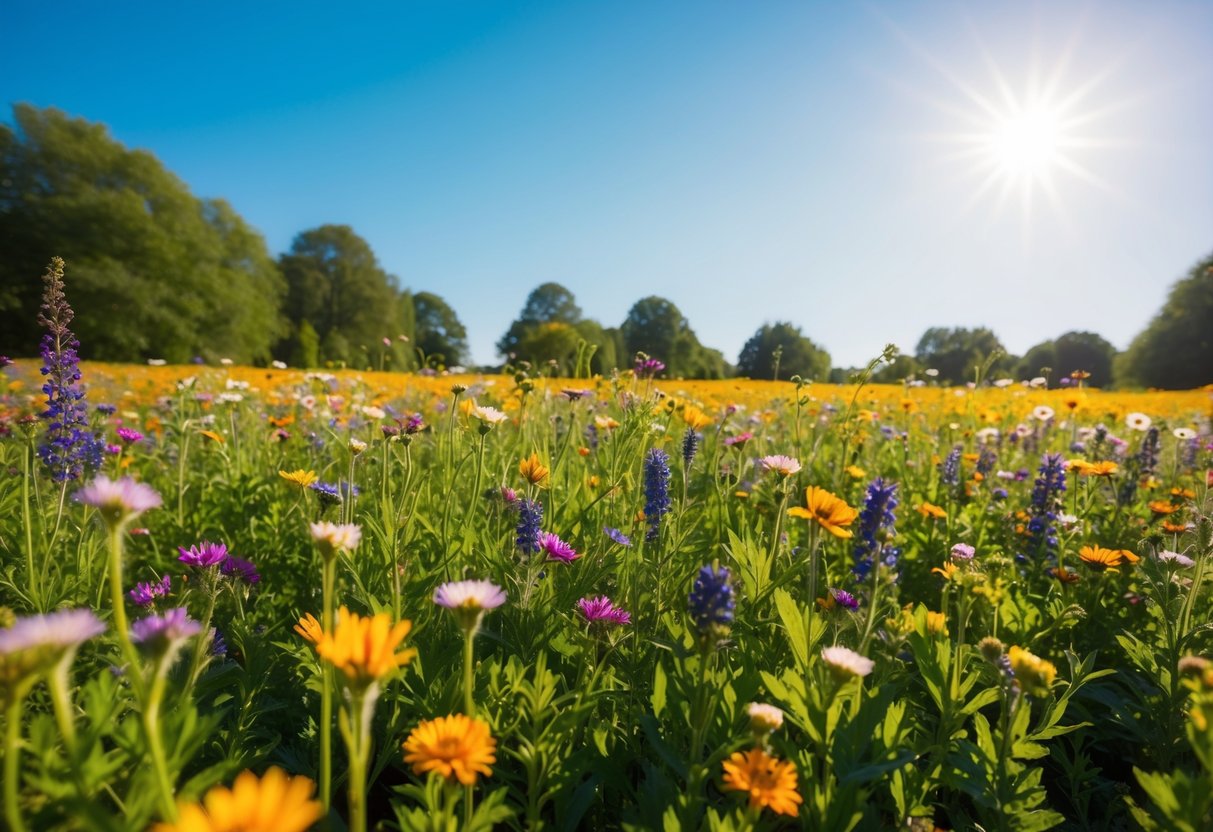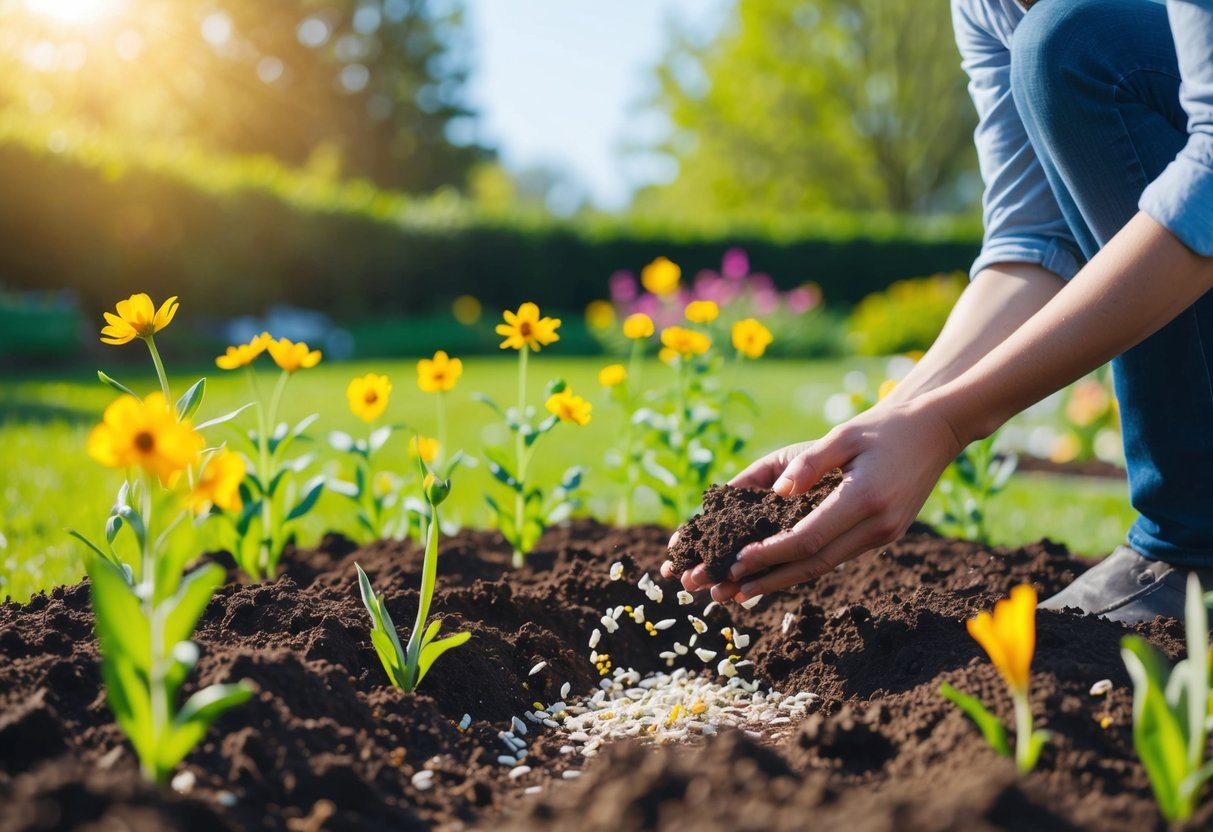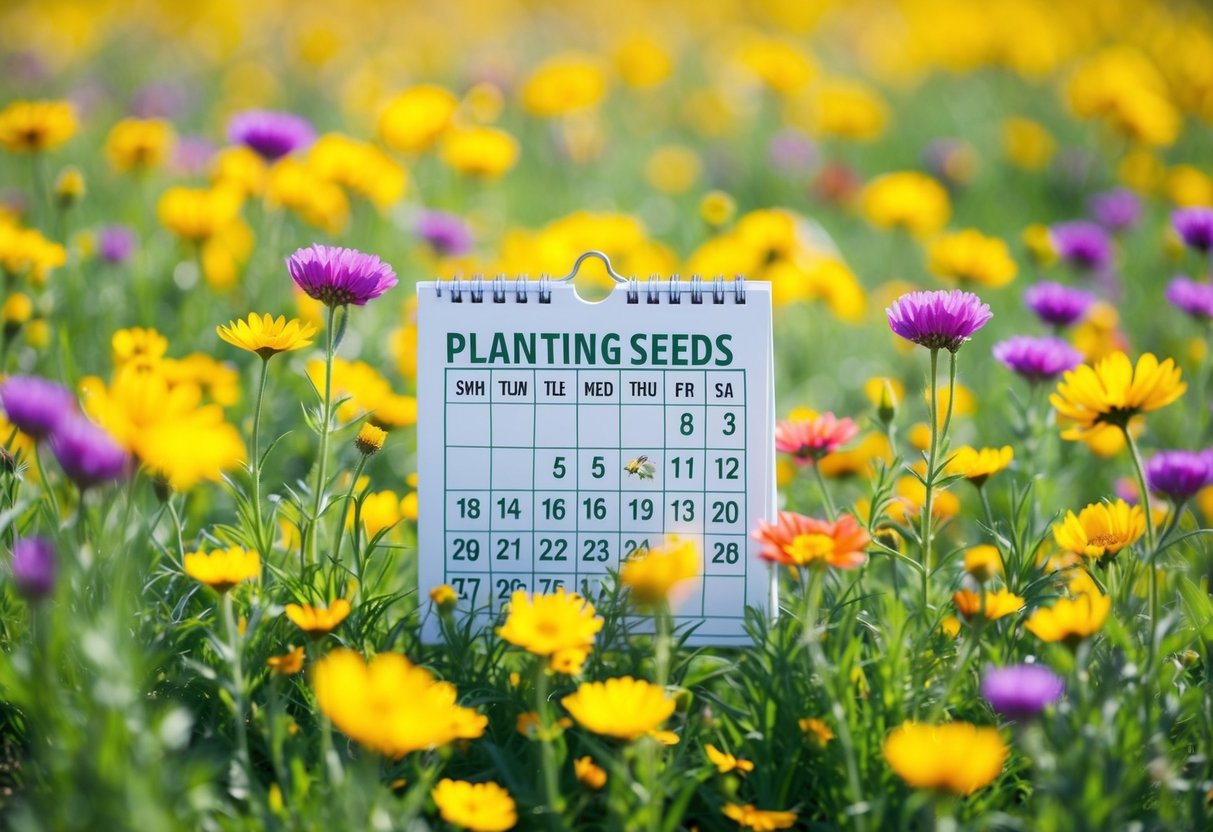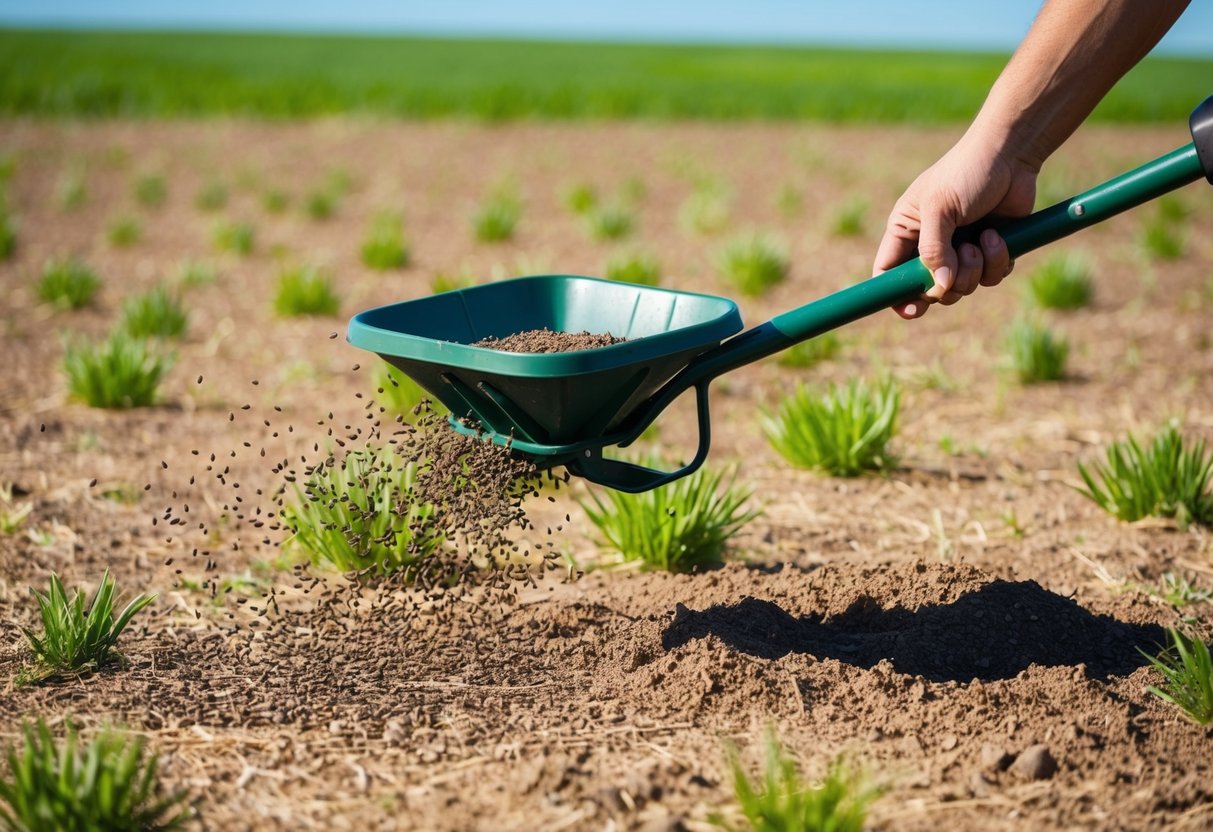What Month Is Best to Plant Wildflower Seeds? A Guide for Blooming Success
Planting wildflower seeds can transform your garden into a colorful, vibrant haven for pollinators. The best time to plant wildflower seeds is in the spring or fall, depending on your region and climate. Spring planting is ideal as it allows seeds to germinate and grow with the warmth of the season. Some regions may see better results in the fall to take advantage of winter conditions that aid in seed stratification.

You should clear your chosen area of vegetation before planting to ensure the seeds don’t face competition. If you’re in a region like Zone 7, planting in fall or early spring can align with natural germination cycles. Make sure to select a spot that gets at least 6 hours of sunlight so your wildflowers thrive once they start growing.
Timing is crucial, as tender wildflowers need warmer soil and can’t handle frost. Learning when to plant wildflower seeds specific to your climate will help guarantee that beautiful blossoms welcome you year after year. Ready to dive more into creating your ideal wildflower garden? Keep reading to discover the perfect approach tailored to different climates and conditions.
Determining the Best Time to Plant
Figuring out when to plant wildflower seeds involves looking at your local climate and soil conditions. This ensures the seeds have the best chance to grow into a beautiful garden. The timing is often focused around how the temperature, frost, and seasons like spring or fall fit into your area.
Understanding Your Local Climate
Your local climate plays a big role in deciding when to plant wildflower seeds. In areas with mild winters, you might plant seeds in fall to let them establish before spring. This can give the seeds a head start when temperatures rise.
In colder regions, early spring is usually better. This is because planting after the last frost ensures that young plants aren’t damaged. Precipitation levels also matter. If you live in a dry climate, make sure your seeds have enough water to grow.
Check your area’s weather patterns and adapt your planting schedule to the conditions you face. Consistent watering may be necessary if you’re dealing with drought conditions.
The Importance of Soil Temperature
Soil temperature is crucial for seed germination. Wildflower seeds generally need warmth to sprout. So, it’s best to plant when the soil has reached the right temperatures.
In early spring, once the soil warms up a little after winter, you can plant the seeds. You should aim to plant when soil temperatures are around 55°F to 65°F. You can use a soil thermometer to check this.
Keep the soil moist but not waterlogged. This helps the seeds absorb water and start growing. Finding the right balance in moisture will help your seeds grow successfully.
Fall Vs. Spring Planting
Planting in fall or spring each has its benefits. Fall planting might be perfect if your area has mild winters, as it allows seeds to take root while the soil is still warm. This sets them up nicely for spring growth.
Spring planting, on the other hand, avoids frost damage, especially important in regions with harsh winters. Planting after the frost date ensures the seeds won’t freeze. This is usually suitable if you live where the winter is cold.
Both options depend on your climate and how prepared you are to handle things like watering and temperature. This way, you give your wildflowers the best conditions to grow.
Preparing the Seedbed

Creating a successful wildflower garden starts with proper ground preparation. This involves ensuring good soil drainage, enriching the soil with organic materials like compost, and making sure the seeds have good contact with the soil.
Soil Preparation and Drainage
Focusing on the soil is key to helping your wildflower seeds thrive. First, clear the area of any existing vegetation. You can do this by hand pulling, hoeing, or tilling the soil. Also, check the drainage. Your planting area should not have standing water after it rains. If needed, amend the soil with sand or grit to improve drainage.
A well-drained plot prevents water from pooling and drowning seeds. A simple way to test drainage is to dig a hole about 12 inches deep. Fill it with water and see how long it takes to drain. If it takes more than a few hours, you might need to improve the drainage by mixing in sand or perlite.
Adding Organic Matter
Adding things like compost or well-rotted manure enriches the soil with nutrients. Spread a layer of organic matter 2 to 4 inches thick over the soil surface before planting. Use a rake or tiller to mix it into the top 6 inches of the soil.
This practice not only provides nutrients but also helps retain moisture and improves soil structure. When the organic matter breaks down, it releases nutrients steadily, giving your seeds a great growing environment throughout the season.
Ensuring Proper Seed-to-Soil Contact
One of the most vital steps in seedbed preparation is ensuring the seeds make good contact with the soil. After amending the soil, smooth the surface with a rake to create a fine seedbed. Once seeds are sown, gently press them into the soil using the back of a rake.
Avoid burying the seeds too deep; they need light to germinate. Consider using a light layer of mulch to maintain moisture and protect against erosion, but make sure it’s not too thick. This balance ensures seeds stay in place while still being exposed to sunlight. Proper seed-to-soil contact maximizes germination rates and leads to a successful wildflower garden.
Selecting the Right Wildflower Mix

Choosing the right wildflower mix is essential for a garden that thrives. Understanding the difference between annuals and perennials, considering native species, and creating a diverse ecosystem will help you select the best mix for your needs.
Annuals Vs. Perennials
When selecting between annual and perennial wildflowers, consider your garden goals. Annuals, such as poppies, bloom the first year and provide quick, vibrant displays. They need replanting each year but can fill gaps in your garden quickly.
Perennials, like coneflowers, come back each year, building a foundation over time. They tend to be hardier and require less maintenance once established. Balancing both types in your wildflower mix can ensure a steady array of colors across seasons.
Considering Native Wildflowers
Choosing native wildflowers strengthens local ecosystems. Native plants are adapted to local soils and climates, making them easier to grow and more resilient to pests and diseases.
Additionally, native species support local biodiversity by providing food and habitat for pollinators and other wildlife. Selecting a mix that includes native species can lead to a healthier, more sustainable garden that aligns with the local environment.
Creating a Diverse Ecosystem
Creating a diverse ecosystem with your wildflower mix enhances biodiversity and helps your garden thrive. Variety in plant species attracts different pollinators such as bees and butterflies. A diverse mix also promotes healthier soil by supporting various microorganisms.
Consider mixing different heights, colors, and bloom times to keep your garden interesting throughout the growing season. Thoughtful planning creates a resilient environment where plants can support each other and flourish together.
Planting and Germination Tips

Growing wildflowers requires some simple yet important steps to ensure they thrive. You’ll need to focus on how to sow seeds effectively, maintain the right moisture levels, and protect your plants from weeds and pests. Each step plays a crucial role in the successful germination and growth of your wildflower garden.
Sowing Wildflower Seeds
First, choose a location that gets plenty of sunlight—at least six hours a day. Prepare the soil by removing any existing vegetation, which helps prevent competition for nutrients. Lightly rake the soil to create a smooth surface.
Scatter the seeds evenly over the prepared soil. For easier sowing, mix seeds with sand. This helps distribute them more uniformly. Press the seeds gently into the soil but avoid covering them with too much dirt. Most wildflower seeds need light to germinate.
Timing is also essential. For most regions, planting in early spring or fall provides the best conditions for seed germination.
Watering and Care During Germination
Proper watering is key. After sowing, water the area gently. Ensure the soil is moist but not soggy. Overwatering can cause seeds to rot or wash away. Use a fine spray or mist to avoid disturbing the seeds.
Monitor the soil regularly, especially if you experience dry weather. Water when the top inch of soil feels dry to the touch. Once the seedlings appear, you can reduce the frequency of watering.
Ensure even moisture that supports healthy growth and prevents stress during the early stages of development.
Managing Weeds and Pests
Managing weeds is vital as they can outcompete your wildflowers for nutrients and sunlight. Mulching can help reduce weed growth, but be cautious not to cover the seeds too deeply.
Hand-pulling weeds is also an effective method. Pests can be another challenge. Inspect your plants regularly for signs of damage or insect activity. Use natural pest control methods like introducing beneficial insects or applying organic treatments if needed.
Planting fragrant herbs nearby can also deter some unwanted critters. A bit of attention in these areas can keep your wildflowers healthy and vibrant.
Maintaining Your Wildflower Meadow

To keep your wildflower meadow healthy and vibrant, focus on regular maintenance tasks. This involves mowing and weeding to manage growth, addressing common issues like pests, and encouraging wildlife and pollinators to visit your meadow.
Mowing and Weeding Strategies
Mowing your wildflower meadow is crucial for promoting new growth. You should mow once or twice a year, usually in late fall or early spring. Cutting your meadow down to about 4-6 inches helps with sunlight penetration and encourages more flowering in the upcoming season. Use a strimmer or scythe for more control.
Weeding is another essential task. Removing invasive or dominant plants can help balance the ecosystem and give all wildflowers a better chance to thrive. Hand-pulling is often the most effective and environmentally friendly method.
Dealing with Common Issues
Common issues in wildflower meadows include pests, diseases, and nutrient imbalances. For pest management, consider using natural predators like ladybugs or allowing birds to visit your meadow.
Overcrowding can lead to nutrient deficiencies. If this occurs, thinning out some plants can improve growth and flowering. Diseases may arise from poor airflow; ensure your meadow isn’t too dense to reduce the spread of diseases.
If soil nutrients are low, you may consider adding compost or organic fertilizers sparingly.
Encouraging Wildlife and Pollinators
Creating a wildlife-friendly environment starts with plant diversity. Choose plants that bloom at different times to offer continuous food for pollinators. Including species like columbine and foxglove can attract beneficial insects.
Place logs or stones to create habitats for insects and ground-nesting birds. Avoid using pesticides, as they can harm bee and butterfly populations. By supporting wildlife habitat naturally, your meadow becomes a refuge for wildlife and a beautiful, thriving ecosystem.







